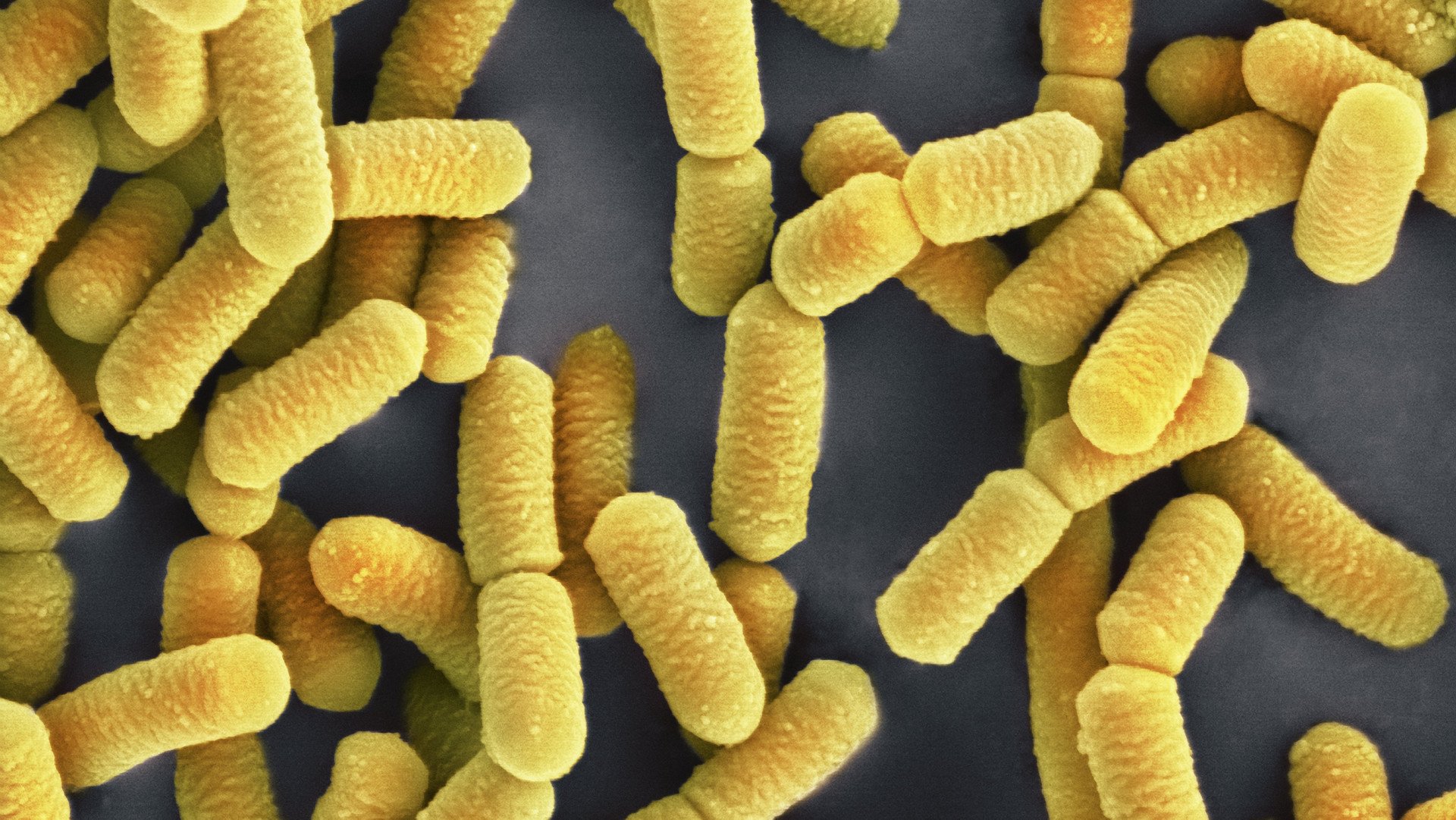Harmless
The Micropia research group at the VU University in Amsterdam conducts research into intestinal bacteria of Ugandan children. Intestinal bacteria are isolated, characterized and investigated to see whether they have a health-promoting effect on humans. Intestinal bacteria are widely known to help us with digestion. The VU University Amsterdam is investigating whether they can also make toxic substances harmless.
Toxins
In many countries with a humid and warm climate, especially in Asia and Africa, so-called mycotoxins are a major problem. These are toxins made by common fungi, such as Aspergillus flavus. These fungi grow on certain crops, including peanuts, corn and all kinds of grains. Aflatoxin B1 is one of the most common toxins produced by fungi and is already toxic at very low concentrations. These toxins can, among other things, change our DNA (they belong to the so-called mutagen) and thus cause cancer in the liver. If products with these aflatoxins are consumed for a long time, there is an increased risk of impaired function of the liver and the immune system. The aflatoxins also have a negative effect on the health of young children where they are associated with growth retardation. The toxins can even reach vulnerable babies through breast milk.
Binding to bacteria
Lactic acid bacteria that occur on plants can bind to the aflatoxins, so that they are not absorbed in the small intestine, but leave the body through the stool. This study investigated whether lactic acid bacteria in the feces of Ugandan children were able to bind to aflatoxin B1, and whether children with large amounts of these lactic acid bacteria in their intestines may have experienced fewer effects from the poison.

Fermentation
The study showed that the lactic acid bacteria were able to bind the toxins. However, children with growth retardation (a possible effect of the substance) turned out to have more instead of less lactic acid bacteria in their intestines. A possible explanation is that an increased intake of aflatoxin via plant food is accompanied by an increased intake of lactic acid bacteria that also live on these plants. The numbers of lactic acid bacteria in the intestines of the children were also found to be too low to bind enough aflatoxin. The researchers therefore come up with a possible solution. Fermenting the grains with lactic acid bacteria could drastically reduce the amount of aflatoxins and prevent vulnerable children and mothers from ingesting them.
Bron: Microorganisms
